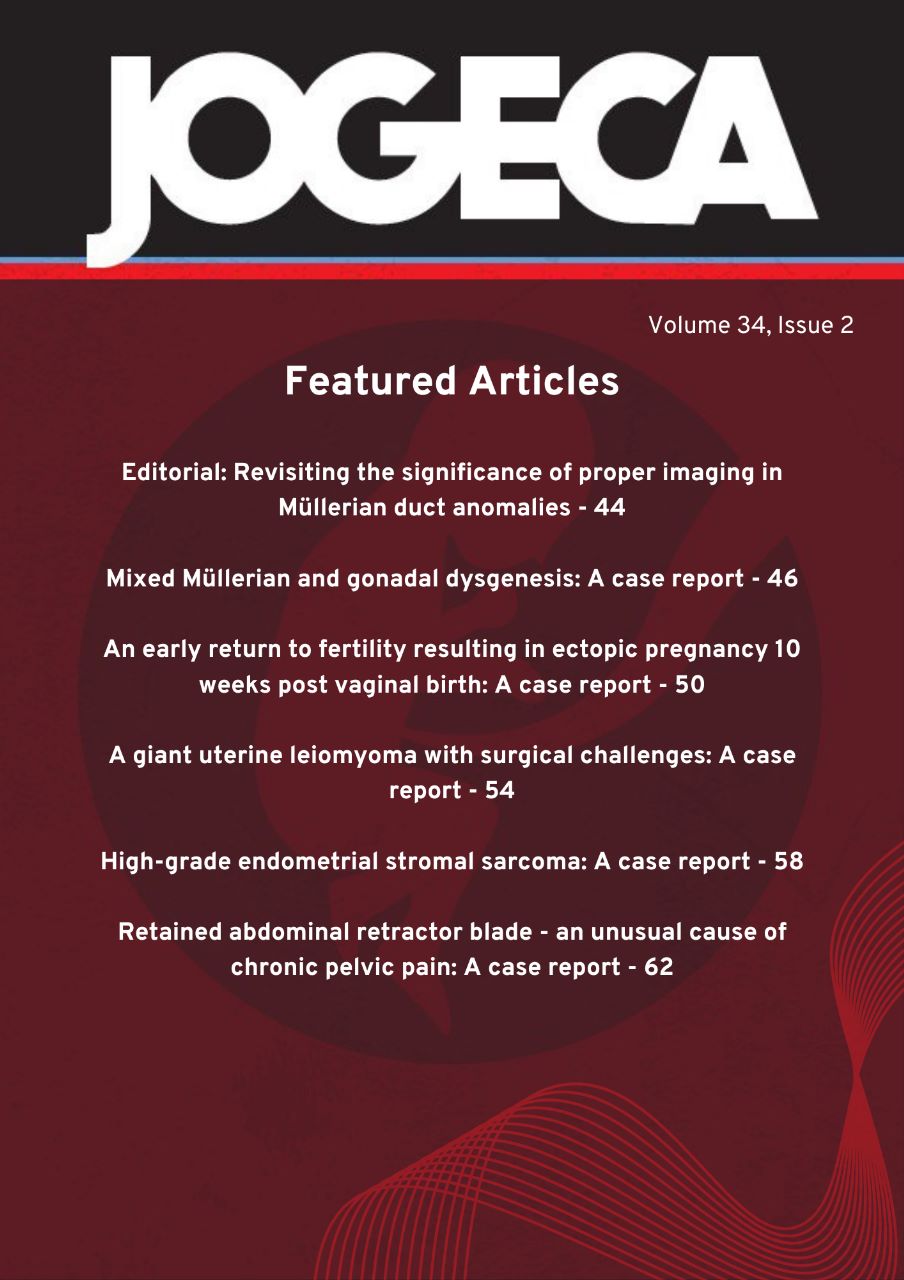Challenges in cosmetic gynecology surgery: A case series
DOI:
https://doi.org/10.59692/jogeca.v36i1.65Abstract
Background: Cosmetic and functional gynecology is a novel specialty that is rapidly gaining traction
across the globe, particularly in Europe, Asia, and America. These intricate procedures enhance the
esthetics and restore the physiological function of the genitalia. This relates very closely to women
sexuality, dignity, self-esteem, and overall confidence. Self-esteem is often closely mirrored and
dependent on a person’s perception of her genitalia, both functionally and more recently esthetically. An
increasing number of gynecologists are gradually embracing this art of restoration as the demand rapidly
increases among patients. The outcomes are sometimes not pleasing to the patients and may require
revision.
Case series: We present four case series of undesirable outcomes from labiaplasty and
perineovaginoplasty. The surgical procedures had to be repeated in two instances because of spousal
demand or from the lady herself.
Case 1: Reconstruction after Type IV female genital mutilation (FGM)
A 46-year-old grand multipara with Type IV FGM presented with sexual dysfunction and psychosexual
problems arising from FGM. She requested reconstruction of the labia minora, restoration of the labia
majora, and perineovaginoplasty. Examination revealed partial clitoridectomy, a narrowed vaginal
introitus with the removal of the labia minora, and excision of the labia majora. The missing tissues made
the reconstruction technically difficult. Labia minora was reconstructed from the labia majora by the
grooving technique, and labia majora fat augmentation with perineoplasty was performed with good
outcomes.
Case 2: Perineoplasty revision.
A 43-year-old, para 3+0, presented with complaints of lax vaginal muscles after her third delivery. All her
deliveries were normal, vertex. She sustained a second-degree perineal tear after her last delivery, which
was repaired. She was started on Kegel’s exercises with no improvement. She had a perineoplasty done
successfully, but she healed with a small rent. A revision was performed with good results.
Case 3: Perineoplasty revision
The patient underwent vaginoperineoplasty, but the perineum healed with a little bump, which both the
patient and the spouse did not like. Revision of perineoplasty was performed with excellent outcomes.
Case 4: Revision of an overly tight vagina after vaginoperineoplasty
The patient had previously undergone vaginoperineoplasty but felt it was not tight enough. However,
three months after revision, the spouse complained of incomplete penetration, whereas the patient
complained of pain at the fourchette. Another revision was performed to address their concerns with
good outcomes.
Conclusion: Cosmetic gynecological procedures must achieve satisfactory outcomes and restore the
client’s genital esthetics and functionality. Although some procedures are technically challenging and may
require repeat procedures, patient satisfaction is key. Knowledge of pelvic anatomy and restoration
techniques is a prerequisite for achieving acceptable outcomes. Counseling of the couple is an integral
part of cosmetic gynecology to manage expectations and rule out psychosocial causes.
Downloads
Published
How to Cite
Issue
Section
Categories
License
Copyright (c) 2024 The Authors.

This work is licensed under a Creative Commons Attribution 4.0 International License.




